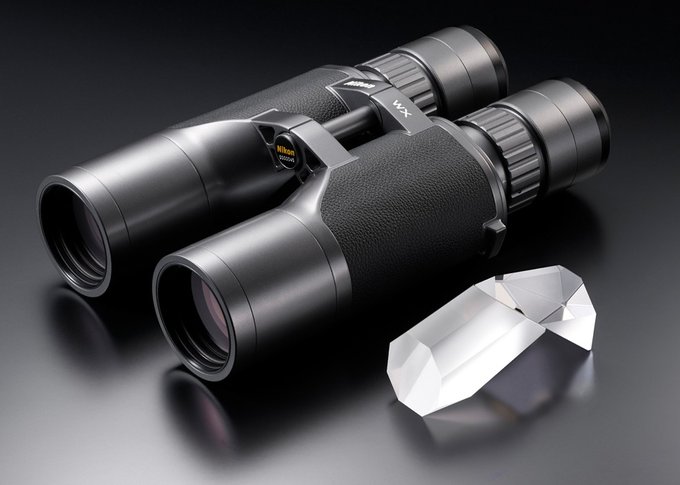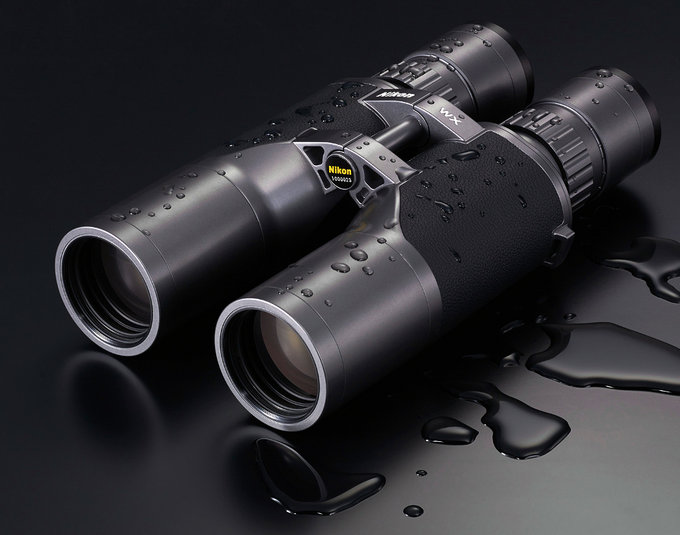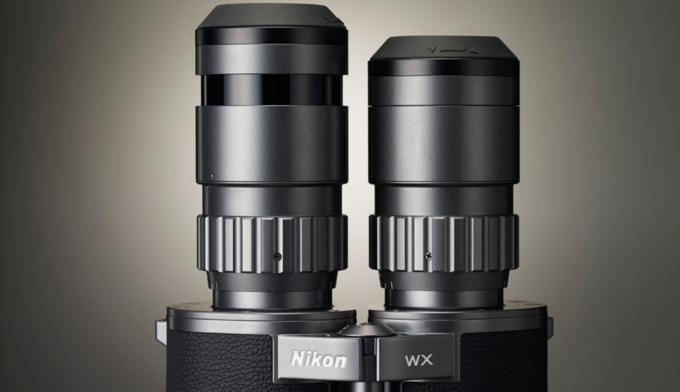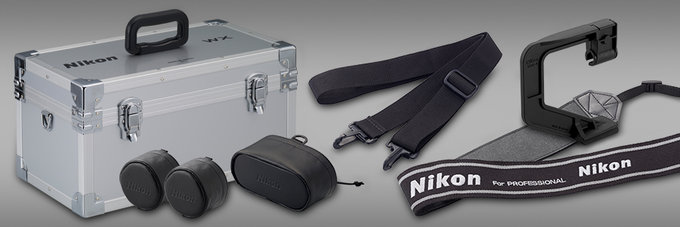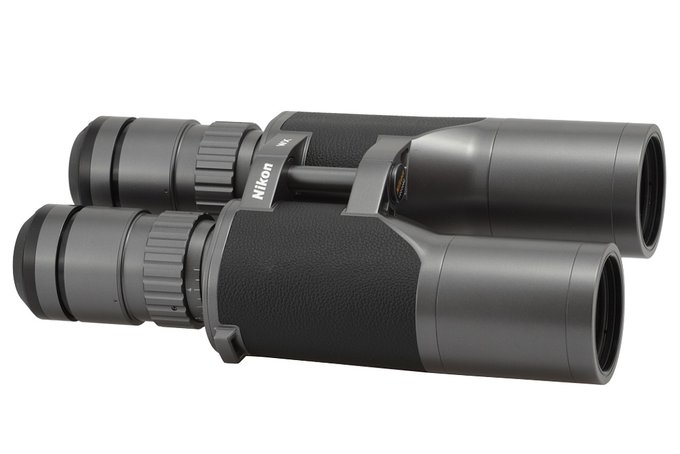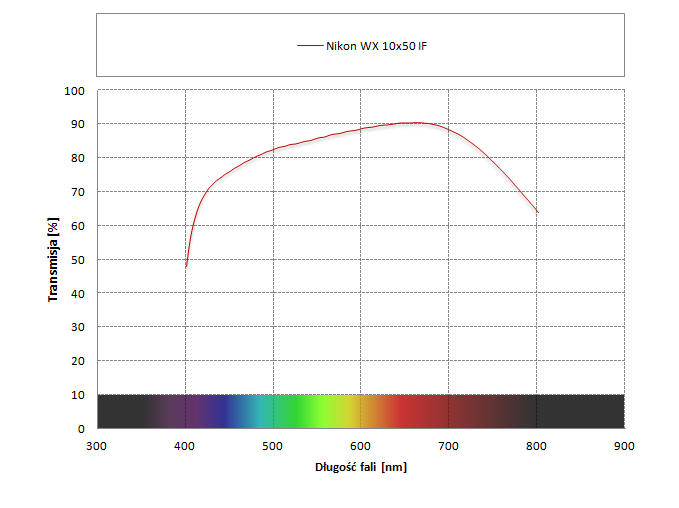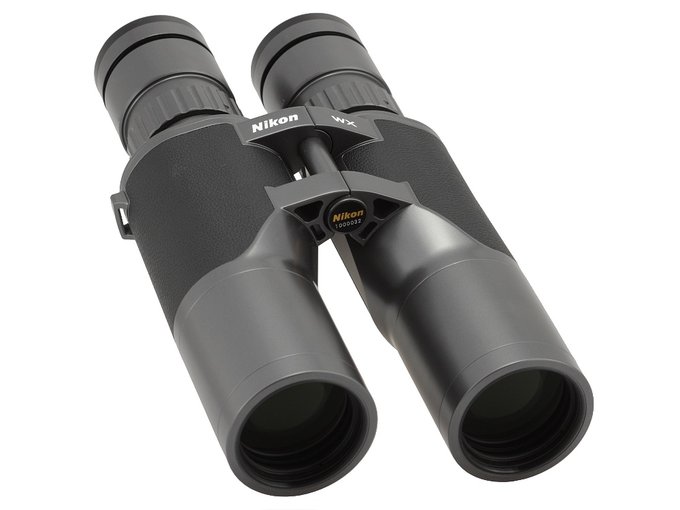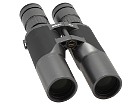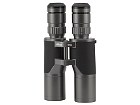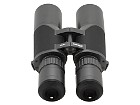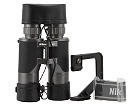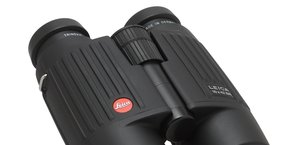In the year 2017 the Nikon company were celebrating its 100th anniversary. Many people wondered how they would commemorate such a round date. The fans of photography expected a bigger number of interesting launches but Nikon chose another way, perhaps in accordance with their heritage - after all the beginning of the company was closely related to sport optics, not photographical instruments. As a result Nikon presented two extraordinary pairs of binoculars and the word ‘extraordinary’ is hardly an exaggeration in their case because those two are a real demonstration of Nikon’s power. They show the whole world what can be achieved in that area if money and physical weight are no limitations whatsoever.
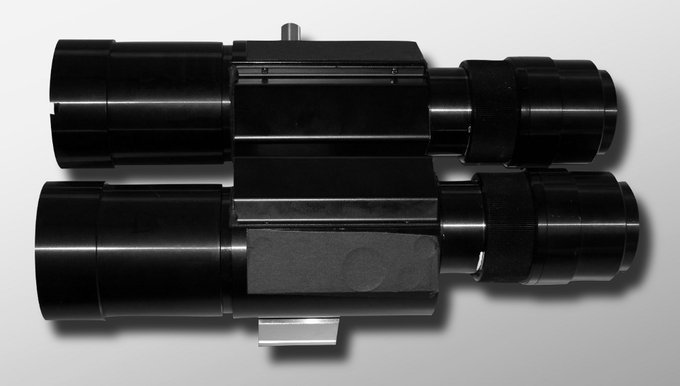
Nikon was thinking about new pairs of binoculars for some time – the first functioning prototype from 2010. |
The results? The WX 7x50 IF and the WX 10x50 IF models, two devices which parameters look ordinary only in their respective names. Their fields of view, amounting to 10.7 and 9.0 degrees, are the key to their peculiarity. In order to show how unusually wide these fields are it’s worth mentioning here that the best contemporary 7x50 class binoculars feature fields of view of about 7.5 degrees and the fields of view of the best 10x50 models usually amount to 6.5 degrees or so. What’s more, Nikon ensures that these huge fields are perfectly corrected from one edge to the other and also the eyepieces come with a very comfortable eye relief distance.
Where is the catch? We’ve already mentioned it – there were no limits concerning the weight, dimensions and price. As a result the binoculars weigh around 2.5 kg, are almost 30 cm long and cost about 6000 Euro. If you fancy the Anniversary edition with the 100th anniversary badge their price might even exceed 9000 Euro.
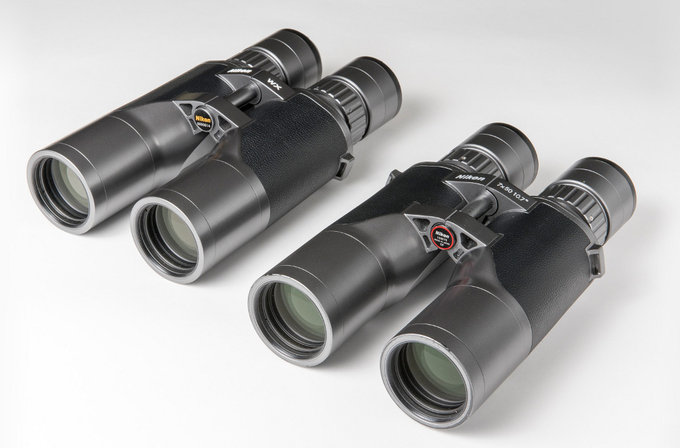
On the left one production specimen, on the right the 2015 prototype. |
Testing and describing such unique optical instruments as the WX series binoculars is the most pleasant thing imaginable so please, excuse the fact that I am going to indulge myself with an extremely long introduction. I simply feel I have to write about the optical construction of new WX devices at some length.
Most of contemporary binoculars have objective lenses which are classical achromats. In better models that system is enriched by low dispersion glass or/and air-spaced. In the case of the Nikons WX the constructors took one step further because their objective lens is a 2+1 triplet in which one element is made of low dispersion ED glass.
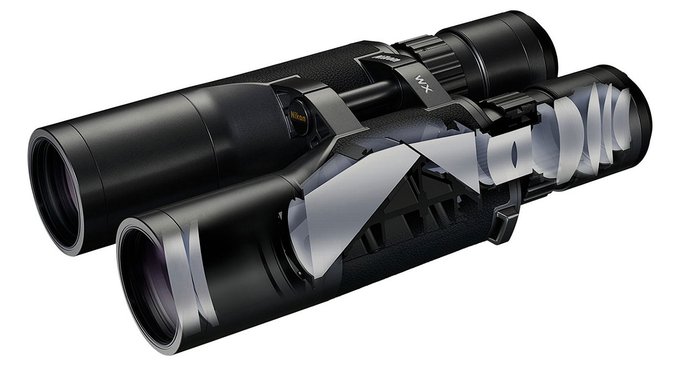
Optical diagram of the WX series binoculars. |
The diagram above renders well only the shapes of elements so it might seem the objective lens is just an air-spaced doublet but if you look at it carefully the first element seems to be a cemented doublet on its own.
Further on you see Abbe-Koenig roof prisms. In case of night binoculars it is a very good piece of news because, like with Porro prisms, their work is based on total internal reflection; such a device is able to provide bright, properly contrasted images.
Right behind the prisms you see a 2-element field flattener lens system, responsible for compensating curvature of field from the center to the very edge of the periphery. A huge eyepiece which seems to be a 6-element, 2+1+1+2 construction, is the next part. As the producer claims in every tube you can find as many as three ED elements and we know the objective lens features just one of these then in the corrector-plus-eyepiece system have to be two other.
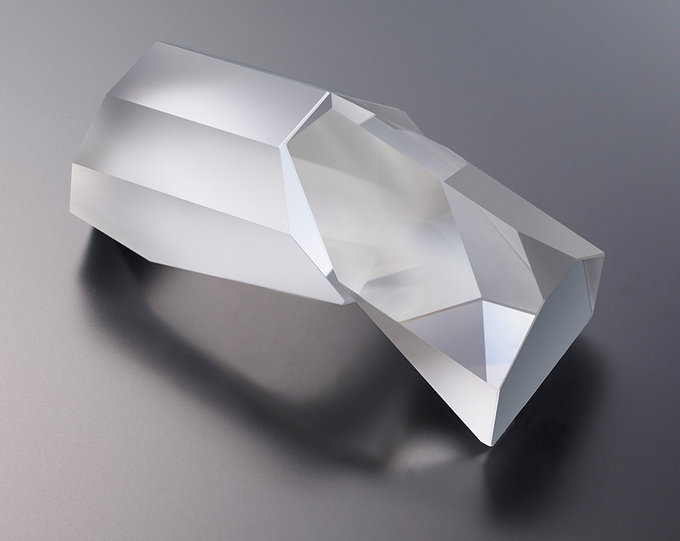
Abbe-Koenig prisms. |
There’s one catch in our description. We tested the 10x50 model without knowing whether we described the right optical diagram because Nikon didn’t reveal which model the picture above concerns. Still we can state that both models feature the same objective lenses, the same prisms, a 2-element field flattener right behind them and a complex eyepiece at the very end.
In a case of a set of binoculars which were constructed without any compromises the highest quality encompasses also the antireflection coatings. Nikon declare that their high-quality multilayer coating are to be found on all air-to-glass surfaces and the prisms are phase-correction coated as well.
Is it enough to guarantee high transmission you would expect from a device for night sky observations? After all there are a lot of air-to-glass surfaces in this pair of binoculars – as many as 20 if we interpret the diagram well. Best coatings have losses of 0.2-0.3 % of light for straight beams in the middle of the visible spectrum. For our calculation let’s assume a value of 0.25%. With 20 air-to-glass surfaces the loss of the whole system has to amount to 5%. However, if you take into account the fact that the efficiency of coatings decreases when you get further from the part of the visible spectrum the device was optimized for, and also for more obtuse angles (and with such a field of view of eyepieces some angles are going to be very obtuse) the losses of, say, 10% shouldn’t surprise us at all.
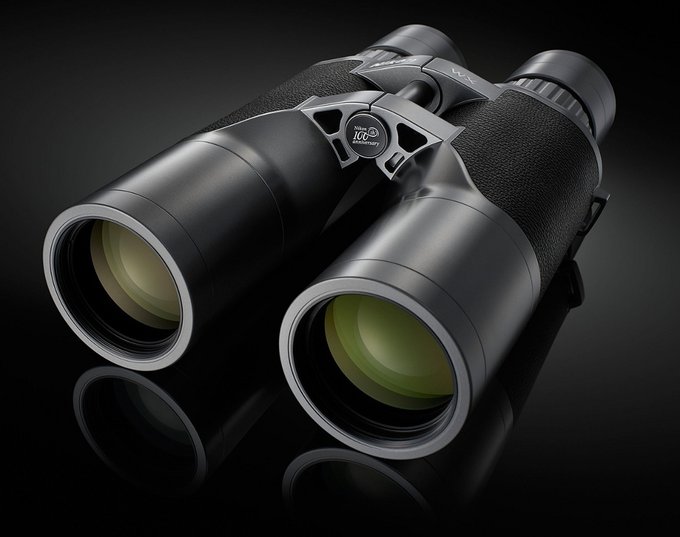
The anniversary edition of the Nikon WX. |
It’s hardly the end of problems. In small binoculars with a simple optical construction we just speak about coatings, forgetting about light absorption in glass. It is completely justified because contemporary glass is optically very clean and the light path in small binoculars – relatively short. As a result the light absorption in glass is one order lower than losses stemming from usage of a certain type of coatings.
Still in a case of a long, complex construction of Nikons WX the light path through glass of the whole optical system has to be taken into account too.
We don’t know what kind of material Nikon employed in their newest models but we can assume it’s the highest quality glass, comparable to the Schott HT which feature many top-of-the-range, contemporary pairs of binoculars. It is characterized by 0.2% of absorption for 400 nm light on a path of 1 cm long. The problem is in the prisms you have to use the BaK-4 glass anyway and in its case, even for HT glass, the loss increases to 0.7%. You can also employ the SK glass, reducing the absorption to 0.4%.
The diagram of Nikon allows you to estimate the optical path in glass; simple graduation of pixels into centimeters shows that the light in the WX glass system has to travel a way about 13 cm long, half of it in prisms. Overall you have to add 6-7% of blue light loss. In the centre of the visible spectrum and for red light the absorption ratio is lower and the loss – significantly smaller.
The casing of the binoculars is made of magnesium composites; on the body part which you keep in your hands during observations you get leather texture and the eyecups with six-click adjustment stops are rubberized. Apart from that the body is nitrogen-purged and waterproof to a maximum depth of 5 meters (for 10 minutes).
Buyers get in the box a very solid, aluminum case, soft eyepiece and objective caps, a big tripod adapter, two straps (one for the binoculars, the other for the case). The binoculars come with a 10-year warranty period.
Distribution / Sales:
Nikon Polska
web site
| Magnification |
Lens diameter |
Angular field of view |
Prisms |
Eye relief |
Weight |
Price |
| 10 |
50 |
157/1000(9o) |
BaK-4/roof |
15.3 mm |
2505 g |
30200 PLN |
|
|
| Real front lens diameter |
Left: 50+/-
0.05 mm
Right: 50+/-
0.05 mm
|
8 / 8.0 pkt |
| Real magnification |
9.97+/-
0.1x
|
3/3.0 |
| Transmission |
85+/-
1%
|
12.5/25.0 |
| Chromatic aberration |
Excellent correction in the centre, average on the edge. |
7.8/10.0 |
| Astigmatism |
Negligible. Almost point-like images of stars. |
8.5/10.0 |
| Distortion |
Distance between the first curved line and the field centre compared to the field of view radius: 38% +\- 4% |
4/10.0 |
| Coma |
Practically invisible. Even on the very edge of the field, close to the diaphragm, the images of stars are almost point-like. |
10/10.0 |
| Blurring at the edge of the FOV |
Sharp image up to the very edge of the field of view. |
10/10.0 |
| Darkening at the edge the FOV |
Zero. |
5/5.0 |
| Whiteness of the image |
Slight greenish-yellow hue. Noticeably slanted transmission graph. |
3.5/5.0 |
| Collimation |
Perfect. |
5/5.0 |
| Internal reflections |
| Left: |
Right:
|
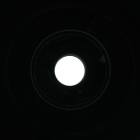 |
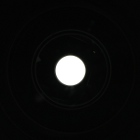 |
Sensational – bright pupils against a practically black background.
|
5/5.0 |
| Housing |
Huge, heavy, made of metal. Perhaps the biggest 10x50 instrument available on the market. In the centre covered by leather armour, very pleasant to the touch. 6-click adjustment eyecups with rubberized endings. Very wide field of view means some observations are difficult. In order to see all of the field the eyecups have to be completely hidden inside or pulled up by just the first click only. Produced in Japan. |
7.5/8.0 |
| Focusing |
Individual focusing separate for each of huge eyepieces. You get two big, comfortable, ribbed rings which turn evenly, with noticeable but acceptable resistance. The dioptre range goes from -5 to +5 but you can turn the ring far beyond that. Everything super solid and fine. |
5/5.0 |
| Tripod |
A pipe in the middle to which you can attach the adapter you get in the box. |
3/3.0 |
| Interpupilary distance |
from 57.6 to 79.1mm
|
5/6.0 |
| Closest focusing distance |
8.20 meters. |
0/2.0 |
| Eyepieces FOV |
Apparent field of view of 89.1 deg (according to simple formula) and 75.9 deg (according to tangent formula). |
20/20.0 |
| Field of view |
Measured by us amounted to 8.94 ± 0.04 degrees and it was only slightly narrower than stated in official specifications. A sensational field for this class of equipment. |
8/8.0 |
| Quality of the interior of the barrels |
Beautifully darkened and matted inside. No ribbing but there are two big diaphragms in the middle of the distance to the prisms. Areas next to prisms also dark and properly matted. Some slight specks of dusts on both prisms. |
4.5/5.0 |
| Vignetting |
| Left: |
Right:
|
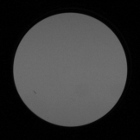 |
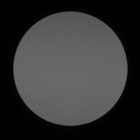 |
OL: 0.24%, OR: 0.0% |
8/8.0 |
| Prisms quality |
High quality BaK-4. |
8/8.0 |
| Antireflection coatings |
Greenish- yellow on objective lenses, bluish on the prisms, greenish-yellow-bluish on eyepieces. Low intensity. |
5/5.0 |
| Warranty [years] |
10 |
4.5/6.0 |
| Final result |
84.6%
|
160.8 / 190 pkt
|
| Econo result |
|
0pkt. |
Summary
Pros:
- solid and waterproof casing,
- record-breaking wide field of view,
- sharp images practically to the very diaphragm,
- sensational coma correction,
- negligible astigmatism,
- excellent correction of chromatic aberration in the centre of the field of view,
- lack of brightness loss on the edge of the field of view,
- round exit pupils against a dark background,
- very good blackening and cleanliness inside the tubes,
- high quality prisms made of BaK-4 glass,
- rich accessory kit.
Cons:
- too low transmission in the blue part of the spectrum,
- high price.
As so much place in the introduction we dedicated to theoretical divagations concerning the transmission and glass absorption now let’s check the situation in practice – below you can find the transmission graph of the Nikon WX 10x50 IF.
It’s clear that our divagations were confirmed. The highest transmission, reaching 90%, you get for red light because at that place light absorption is negligible; that value is due mainly to losses on air-to-glass surfaces. In the middle of the visible spectrum you get results of 85% and for blue light the transmission is only below 80%. Selective absorption of light in big glass chunks of the WX is responsible for the most of the inclination of the presented graph and the fact that the binoculars don’t render colours in a perfect way, showing images with green-yellow hue. Still the producer is hardly guilty. Nowadays we simply don’t have better glass and if an optical system is complicated it has to absorb more light.
As we are already talking about flaws of the tested binoculars we have to add two more things. Despite the assurances of Nikon I couldn’t believe that eyepieces with such a wide field of view can correct distortion in a perfect way. The practice proved that I was right or, at least, Nikon didn’t manage to do a better job. The result is perhaps not exactly weak, being closer to a medium level, but you can notice distortion in images provided by the WX for sure.
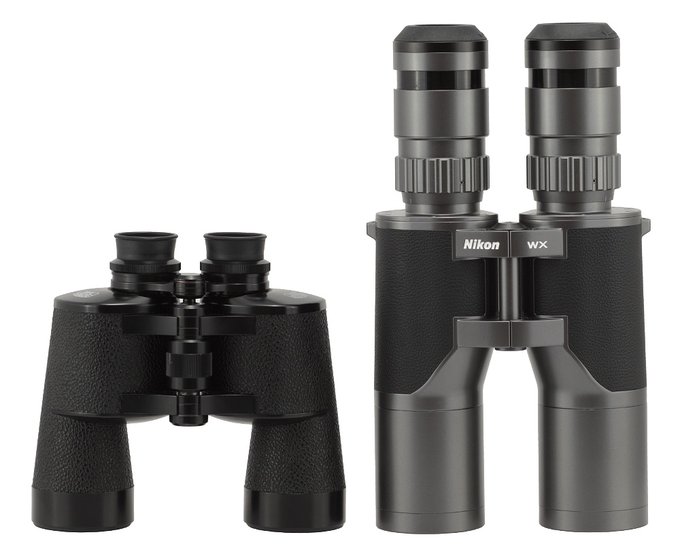
Ordinary 50 mm Porro model and the WX 10x50 IF. Compare the size of their eyepieces. |
The second issue stems from the huge field of view; I am not sure whether it would be possible to solve it in better or another way. Nikon boasts of eyecups with six-click adjustment. However, if you want to see the whole field, the eyecups have to be either completely collapsed or, at the most, pulled out by one click only. Other four clicks are not especially useful. What’s more, in order to enjoy beautiful images it would be the best to shelter the eyepieces with your hands; with such a large field of view every side light distracts you and spoils you the joy of using this pair of binoculars.
Ok, no more carping because this model definitely doesn’t deserve harsh critique. Like in the case of distortion, when it comes to image sharpness on the edge of the field I didn’t believe it could be corrected in a perfect way. I was right about distortion but wrong when it came to sharpness. Nikon have proved time and again that they are experts at flat fields of their binoculars. In this model they repeated that trick and, what’s more important, they preserved the normal eye relief distance at the same time. The field is really monstrous and almost perfectly sharp to the very edge, without any traces of coma or brightness loss. The effect is simply staggering. I admit I wasn’t sure such an instrument can be constructed at all and I doubt any other producer will be able to launch a similar pair of binoculars on the market.
In 2013 Zeiss launched the Otus series photographic lenses which were a demonstration of power and their optical skills. With those instruments they told their rivals: “look what we are able to produce if the weight, dimensions and price don’t limit us anymore”. The WX series is a similar declaration of Nikon in the segment of binoculars. It is also a power show and it took a surge of courage too because the sports optics sector is much smaller than the photographic market. Of course it is also a splendid way to celebrate your centennial anniversary.
Now I would really love it if that photographic analogy was continued. After releasing the Otus devices Zeiss presented the Milvus series consisting of lenses which are smaller and physically lighter than the Otus ones, definitely less expensive but with just slightly worse performance.
Dear Nikon, if you have enough will and courage, please construct a 10x50 pair of binoculars with a field of view of 7.5-8.0 degrees but perfectly corrected, which will outclass all the rivals anyway in that area. Make this new pair of binoculars noticeably smaller, lighter and cheaper than the WX device and I’ll be very happy. Apart from that I sincerely congratulate you on launching the WX series on the market.





